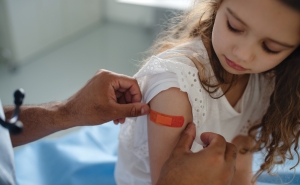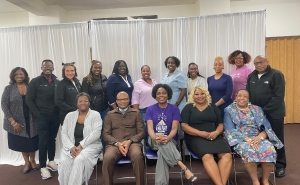New Online COVID-19 Mortality Risk Calculator Could Help Determine Who Should Get Vaccines First

Calculator generates mortality risk estimates for individuals and communities based on sociodemographic info and medical history
A new online calculator for estimating individual and community-level risk of dying from COVID-19 has been developed by researchers at the Johns Hopkins Bloomberg School of Public Health. The researchers who developed the calculator expect it to be useful to public health authorities for assessing mortality risks in different communities, and for prioritizing certain groups for vaccination as COVID-19 vaccines become available.
The algorithm underlying the calculator uses information from existing large studies to estimate risk of COVID-19 mortality for individuals based on age, gender, sociodemographic factors and a variety of different health conditions. The risk estimates apply to individuals in the general population who are currently uninfected, and captures factors associated with both risk of future infection and complications after infection.
“Our calculator represents a more quantitative approach and should complement other proposed qualitative guidelines, such as those by the National Academy of Sciences and Medicine, for determining individual and community risks and allocating vaccines,” says study senior author Nilanjan Chatterjee, PhD, Bloomberg Distinguished Professor in the departments of Biostatistics and Epidemiology at the Bloomberg School.
The new risk calculator is presented in a paper that appears in the journal Nature Medicine.
The researchers also collaborated with PolicyMap, Inc. to develop interactive maps for viewing numbers and the proportion of individuals at various levels of risks across U.S. cities, counties and states. These maps will allow local policymakers to plan for vaccination, shielding high-risk individuals, and other targeted intervention efforts.
COVID-19, the pandemic infectious disease that has swept the world over the past ten months, afflicting nearly 70 million people and killing more than 1.5 million worldwide, can affect different people in starkly different ways. Children and young adults may suffer very mild disease or no symptoms at all, whereas the elderly have infection mortality rates of at least several percent. There are also clear ethnic and racial differences—Black and Latinx patients in the U.S., for example, have died of COVID-19 infections at much higher rates than white patients—as well as differences linked to preexisting medical conditions such as diabetes.
“Although we have long known about factors associated with greater mortality, there has been limited effort to incorporate these factors into prevention strategies and forecasting models,” Chatterjee says.
He and his team developed their risk model using several COVID-19-related datasets, including from a large U.K.-based study and state-level death rates published by the Centers for Disease Control and Prevention, and then validated the model for predicting community-level mortality rates using recent deaths across U.S. cities and counties.
The calculator based on the model is available online for public health officials and interested individuals alike. It enables a user to determine individual risk based on factors such as age, sex, race/ethnicity, and medical history and can be used to define risk for a group, such as for a particular community, corporation, or university, based on the mix of relevant factors that define the group.
In their paper, Chatterjee and colleagues used their calculator to describe the risk distribution for the whole U.S. population, showing, for example, that only about four percent of the population at high risk—defined as five times greater risk than the U.S. average—is expected to contribute close to 50 percent of the total deaths. The researchers also showed that population-level risk varies considerably from city to city and county to county. “For example, the percentage of the adult population exceeding the fivefold risk threshold varies from 0.4 percent in Layton, Utah, to 10.7 percent in Detroit, Michigan,” Chatterjee says.
The calculator allows users to calculate mortality risk of individuals by combining information on individual-level factors with community-level pandemic dynamics, as available from a large variety of forecasting models. Thus, when a big wave of infections hits a population, the risk estimates for individuals will rise in that community. Currently, the tool is updated on a weekly basis to incorporate information on state-level pandemic dynamics.
Chatterjee and his colleagues expect that their calculator will be useful in setting priorities for allocating early COVID-19 vaccines and other scarce preventive resources such as N95 masks. Proposed guidelines from the U.S. National Academy of Sciences, Engineering and Medicine put frontline medical workers in the top-priority category to maximize societal benefits and minimize the chance that they will infect others, but most other priority categories are based broadly on estimated risks for infection and disease severity and, for example, give higher priority to the elderly and to people with conditions such as diabetes.
“People may understand broadly that with a preexisting condition such as obesity or diabetes, for example, they are at higher risk, but with our calculator they should be able to understand their risk in a way that takes multiple factors into account,” Chatterjee says.
“Assessment of Individual- and Community-level Risks for COVID-19 Mortality in the US and Implications for Vaccine Distribution” was written by Jin Jin, Neha Agarwala Prosenjit Kundu, Benjamin Harvey, Yuqi Zhang, Eliza Wallace, and Nilanjan Chatterjee.
Funding for the research came from the Bloomberg Distinguished Professorship endowment.
# # #
Media contacts: Carly Kempler at ckemple2@jhu.edu and Barbara Benham at bbenham1@jhu.edu.
For more information on the novel coronavirus and COVID-19, visit our COVID-19 Expert Insights site.
More from the Bloomberg School
- Visit our newsroom
- Learn more about our departments:





